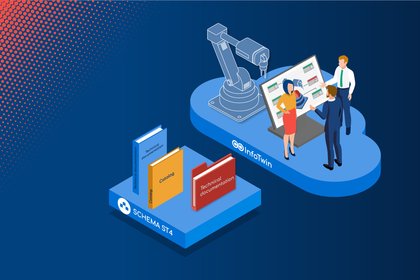What Does COTI Actually Mean?
If you work in technical writing, you might have already come across the abbreviation COTI at some point. It comes up again and again in relation to translation content management systems in particular. But what does it actually mean? Let’s go ahead and take a closer look...

Translation—pain-free savings potential
COTI has to do with translations, as we've already mentioned. But before we look at the standard, we’d like to start by considering why translations are so important for technical writing teams.
Firstly, there are very tangible legal reasons for this. The EU Machinery Directive stipulates that products may only be marketed if operating instructions are available in the official language(s) of a given country. The only exceptions to this are when the users invariably speak another language; for example, it can be assumed that software developers will speak English, if they are the target group.
Apart from this, there are also economic reasons in favor of translations. Because even though it’s often said that English is a lingua franca understood by everyone, the truth is somewhat different. Only 25 percent of Internet users understand English, and 40 percent of customers say they never or only very rarely make a purchase if a website is in a different language.
In other words, there are good reasons why manufacturing companies would want their content translated. But translations also come with a high cost factor, because in addition to translating the actual words, all documents involve layout and review work as well. Given the strong growth we’re seeing in different types of products, configurations, and target markets, costs often increase exponentially. For this reason, many technical writing teams decide to work with component content management systems (CCMS) and translation tools.
COTI—a standard for exchange
This is exactly where COTI comes into play. The COTI (common translation interface) standard defines an XML-based interface between CCMS and translation memory systems. COTI was developed by the DERCOM consortium to enable an exchange between CCMS and translation tools, independent of the vendor.
COTI consists of a number of levels that create the framework for collaboration between technical writing teams and translation agencies. On level 1, everything is in place for exchanging files manually. Level 2 supports a partially automated process via “watched folders” that agencies and technical writing teams can both access and populate with files automatically. COTI level 3 provides for completely automatic processes via a web interface, which means technical writing departments receive translation results directly without a delay.
CCMS and TMS—the perfect team
Component content management systems (such as SCHEMA ST4) and translation memory systems (like Trados Studio) complement each other almost perfectly when it comes to saving time and money in the translation process. The CCMS makes it possible to standardize and control the content. It also takes care of managing the content to be translated, for example, via the translation management module. Depending on the requirements, only new content to be translated can be exported, or entire documents (so translators can see the context as well). The CCMS also uses an automatically created generic layout to take care of the design work for the translated documents.
The translation memory, in turn, provides terminology components and offers a connection to professional translation tools, such as AI-based systems or machine translation tools. And, of course, the core functionality of the TMS—which is managing and reusing sentences and sentence fragments—speeds up the translation process tremendously. As a result, TMS on their own can result in savings of 40 percent. In conjunction with a CCMS, this figure increases to 70 percent of the costs involved in translation. And the basis for this is COTI—a central standard aimed at boosting efficiency in the technical writing industry.


